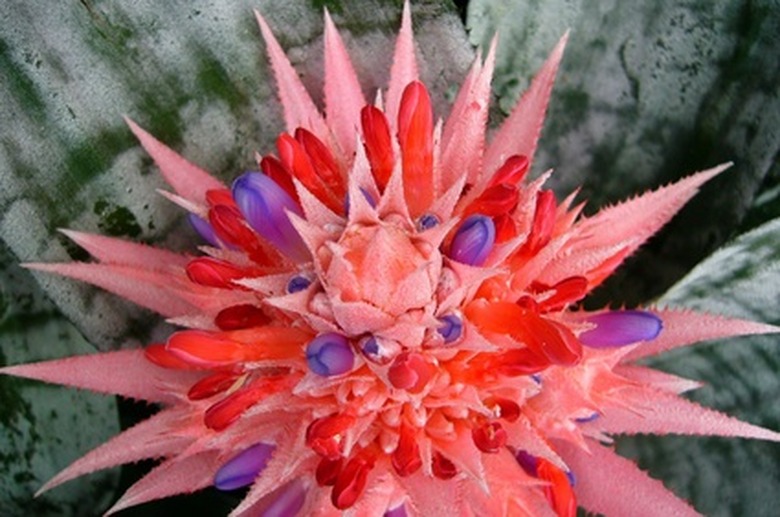Flowers Native To Ecuador
Ecuador covers less than 0.2 percent of the Earth's surface but is home to nearly 10 percent of the plant species known in the world. Over 25,000 species of plants grow in Ecuador. Ecuadorian tropical rain forests can be home to over 300 species of trees in a single hectare. The mountains of Ecuador are home to the cloud forests, where thick humidity and rainfall combine with mild temperatures to create unique climactic environments.
Passionflower
Passionflowers are native to Ecuador but grow at around 7,200 feet in the hot, tropical Ecuadorian climate. High altitudes offer cooler temperatures with full, tropical sun, and generally offer high humidity and higher levels of rainfall. Passionflowers result in a fruit known as granadilla, a seedy fruit that resembles a melon. Passionflowers are pink flowers with yellow and green pistils and stamen. They require deep, fertile soil that drains well but can grow on soils that range from volcanic to sand to decomposing granite. In less than ideal soils, however, passionflower vines may not be as productive.
- Ecuador covers less than 0.2 percent of the Earth's surface but is home to nearly 10 percent of the plant species known in the world.
- Passionflowers are native to Ecuador but grow at around 7,200 feet in the hot, tropical Ecuadorian climate.
Magnolias
A number of magnolias are native to Ecuador, including some that are significantly different from North American magnolias. The mamey is a flowering tropical fruit tree that can grow to 70 feet tall. The fragrant flowers of this tree are 1 to 1 1/2 inches across and have four to six white petals with orange stamens and pistils. This flowering tree thrives from sea level to around 3,300 feet in elevation in Ecuador. Although it grows best in deep, fertile, well-drained soils, it is very tolerant of soils and can also grow in shallow soils.
Bromeliads
Bromeliads are a family of flowers that cover a wide range of shapes, sizes, foliage colors and type, and flower shapes, sizes and colors. Pineapples are a form of bromeliad. Bromeliads can grow outdoors in areas that do not get frost. In places that get hard freezes, bromeliads grow very well in a pot, which makes it easy to bring them inside for the winter. Bromeliads tend to do fine in low light, but will grow better in full sun. Because of the variances in these plants, however, you may find some varieties that do not do well in full sun. Bromeliads do best with daytime temperatures of 70 degrees F to 75 degrees F and nighttime temperatures of 60 degrees F to 65 degrees F.
- A number of magnolias are native to Ecuador, including some that are significantly different from North American magnolias.
- Bromeliads tend to do fine in low light, but will grow better in full sun.
